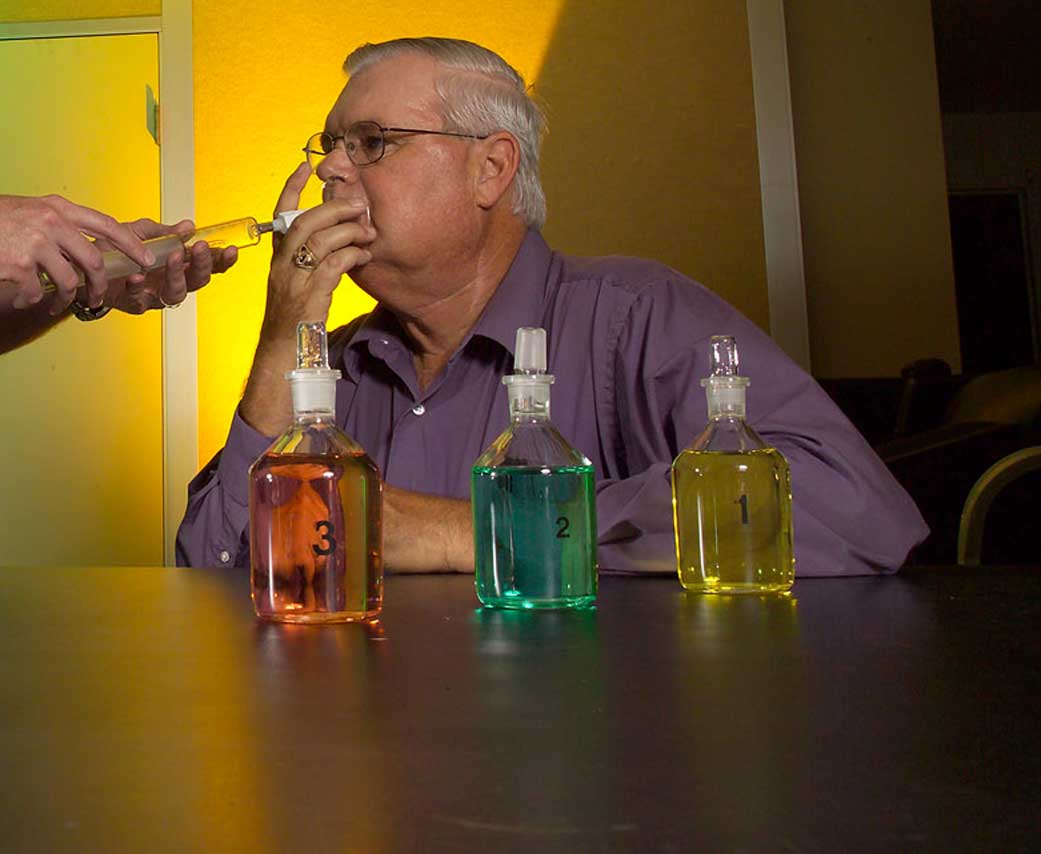Our team evaluates items for odor before they are sent to space to ensure that they will not become a long term nuisance or contribute to olfactory saturation. Disagreeable or offensive smells may nauseate astronauts and possibly put astronaut’s productivity and mission at risk. Smell is intensified by the confined space and heat in the closed environment of the International Space Station (ISS) and astronauts have no way to eliminate these odors once they are introduced. Astronauts do not have access to fresh air via a window that may dissipate an offensive odor. In addition to astronaut discomfort, odors can saturate the sense of smell and reduce an astronauts ability to detect critical events such as a fire or an ammonia leak onboard. The human nose is still the most sensitive detection method available and reducing saturating stimuli ensures this first line of defense is such events.
Odor Panel members are qualified before they are allowed to test samples. At least 5 volunteers receive a nose and throat examination by a registered medical professional. In addition, each member is odor qualified by detecting the seven primary standards of ether, camphor, musk, floral, mint, pungent, putrid, and three odorless standards from 10 samples. For each test series, all materials or assembled articles first complete toxic offgas testing to eliminate any items that may contain poisonous vapors before being evaluated for odor. Each sample to be evaluated is administered into plastic masks worn by panel members who rate the odor potency and quality.




























